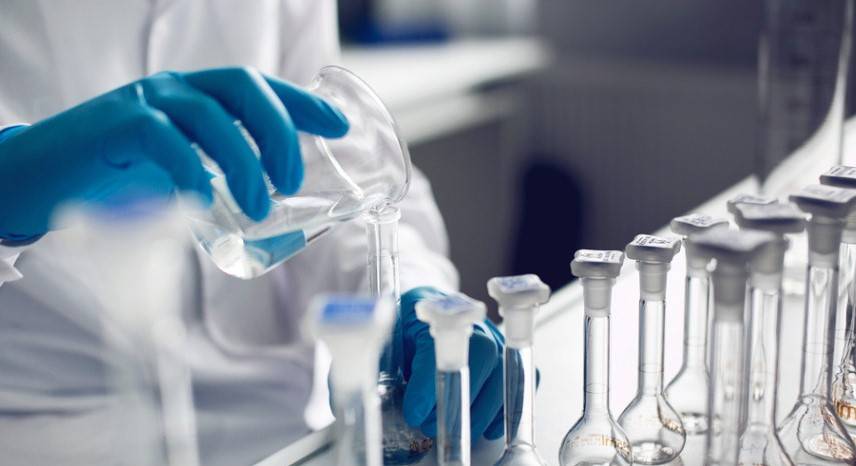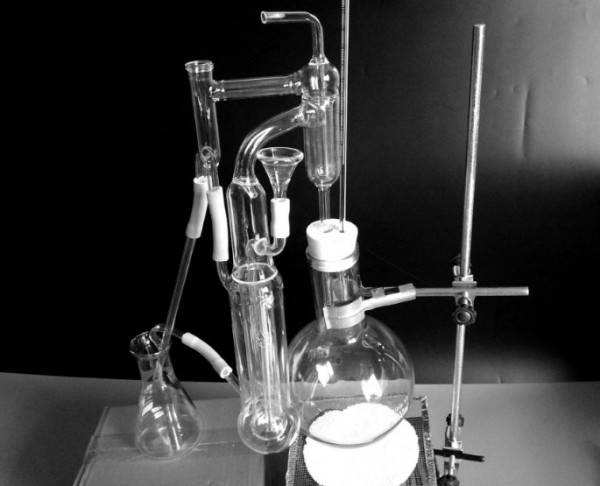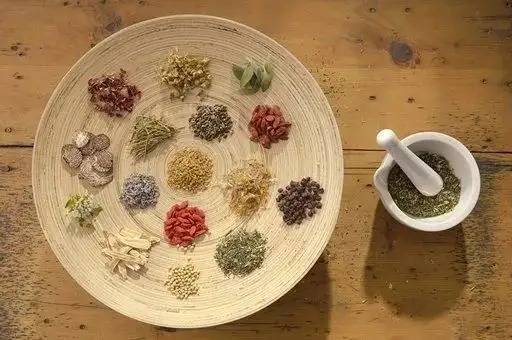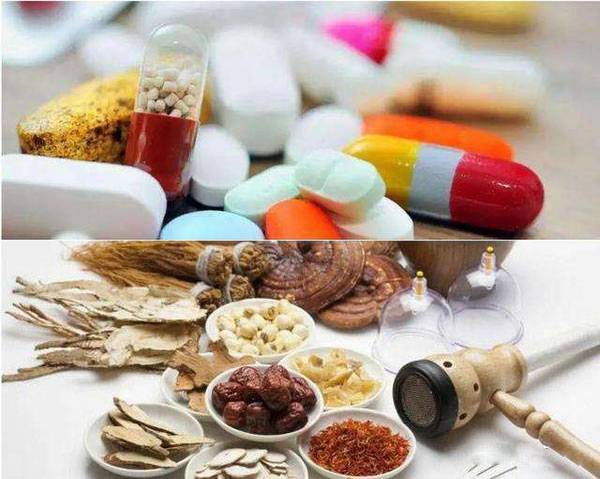Molecular Distillation in Traditional Chinese Medicine
Extraction of Active Ingredients
In traditional Chinese medicine, molecular distillation is employed to isolate and concentrate active ingredients such as essential oils, aromatic substances, and alkaloids from botanical sources. This extraction process plays a crucial role in the production of various medicinal and cosmetic products, including herbal tablets, medicinal wines, spices, and cosmetics.
The extraction process involves carefully separating the desired compounds from the raw plant materials. Various techniques can be employed, such as solvent extraction, distillation methods, or pressing and sublimation, each selected based on the specific extraction principle and the nature of the target compounds. Among these, solvent extraction techniques like cold and hot maceration, as well as Soxhlet extraction, are commonly utilized.
Solvent extraction techniques typically involve the use of a glassware setup. Cold and hot maceration, while simple, often yield lower amounts of the desired compounds and are time-consuming and solvent-intensive. In contrast, Soxhlet extraction, which involves multiple successive macerations, offers improved yields with fewer cycles, making it more economical and environmentally friendly due to reduced solvent consumption.
This meticulous extraction process ensures that the active ingredients are efficiently isolated, preserving their therapeutic and aromatic properties for use in a wide array of traditional Chinese medicinal and cosmetic products.

Low-Temperature Distillation
Low-temperature distillation is a critical process in the extraction of active ingredients from plants, particularly in traditional Chinese medicine. This method is typically conducted within the temperature range of 50-100 °C to safeguard the integrity of heat-sensitive compounds. The rationale behind this temperature limitation is to avert the decomposition of valuable active ingredients, which can degrade under higher temperatures.
The process of low-temperature distillation can vary significantly depending on the specific plant material and the nature of the active ingredients involved. For instance, some compounds may require more stringent temperature controls to prevent oxidation or other chemical reactions that could compromise their efficacy.
An alternative approach to achieving low-temperature distillation is through short path vacuum distillation. This technique operates under reduced pressure, effectively lowering the boiling point of the liquid mixture. For example, water, which boils at 100°C under standard atmospheric pressure, can boil at 95°C in Denver due to the lower atmospheric pressure. By employing vacuum distillation, the risk of thermal degradation is further mitigated, making it an ideal choice for preserving the delicate chemical profiles of plant extracts.
In the context of pharmaceutical applications, particularly in the distillation of crude oil, maintaining low temperatures is equally crucial. Operating temperatures above 370-380 °C can lead to the thermal cracking of high molecular weight components, resulting in the formation of petroleum coke. This not only impairs the efficiency of the distillation process but also poses significant operational challenges, such as tube plugging in furnaces and distillation columns.
To circumvent these issues, the distillation of residual oil from atmospheric distillation columns is often performed at absolute pressures as low as 10 to 40 mmHg (approximately 5% of atmospheric pressure). This method ensures that the operating temperature remains below the critical threshold of 370-380 °C, thereby preserving the quality and integrity of the distillate.
In summary, low-temperature distillation, whether achieved through conventional methods or vacuum distillation, plays a pivotal role in the preservation of active ingredients in both traditional Chinese medicine and modern pharmaceutical processes. By carefully managing temperature and pressure conditions, this technique ensures the extraction of high-quality, potent compounds without compromising their chemical stability.

Molecular Distillation in Western Pharmaceuticals
Preparation of High-Purity Compounds
Molecular distillation plays a crucial role in the preparation of high-purity pharmaceutical raw materials and preparations. This advanced technique is particularly effective for isolating solvents like ethanol and compounds such as alkaloids, hormones, and vitamins. The process involves distilling these substances at medium to high temperatures, typically ranging from 200 to 300°C, to ensure the highest levels of purity.
For instance, alkaloids, known for their potent pharmacological effects, are often derived from plants and require precise purification methods to remove impurities. Similarly, hormones and vitamins, which are sensitive to high temperatures, benefit from molecular distillation due to its ability to maintain their structural integrity while achieving high purity.
The use of molecular distillation in Western pharmaceuticals extends beyond just purification; it also ensures the consistency and quality of the final products. This method is particularly advantageous for compounds that are difficult to purify using conventional techniques, making it an essential tool in modern pharmaceutical manufacturing.
Medium to High-Temperature Distillation
Distillation processes in Western pharmaceuticals often operate within the medium to high-temperature range, typically between 200-300°C. This temperature regime is crucial for achieving the high levels of purity required in pharmaceutical compounds. The elevated temperatures facilitate the efficient separation of components, ensuring that the end products meet stringent purity standards.
In contrast to low-temperature distillation methods used in traditional Chinese medicine, which are designed to preserve temperature-sensitive compounds, medium to high-temperature distillation in Western pharmaceuticals is more concerned with the rapid and effective purification of compounds that can withstand higher heat. This method is particularly advantageous for processing compounds that would otherwise degrade or lose efficacy at lower temperatures.
For instance, short path distillation system, a variant of high-temperature distillation, employs reduced pressure to lower the boiling point of the mixture. This technique not only accelerates the distillation process but also minimizes the exposure of temperature-sensitive components to high heat, thereby preventing unwanted degradation. Such methods are essential in the preparation of high-purity pharmaceutical raw materials, including solvents like ethanol and compounds such as alkaloids, hormones, and vitamins.
The application of medium to high-temperature distillation underscores the importance of precision and efficiency in Western pharmaceutical practices, reflecting a different approach compared to the more conservative, low-temperature methods prevalent in traditional Chinese medicine.
Differences Between the Two Fields
Application Purposes
Molecular distillation serves distinct purposes in traditional Chinese medicine and Western pharmaceuticals. In traditional Chinese medicine, this technique is primarily employed for the extraction of plant-based active ingredients, such as essential oils, aromatic substances, and alkaloids. These extracted compounds are integral to various medicinal products, including herbal tablets, medicinal wines, spices, and cosmetics. The emphasis is on preserving the integrity and efficacy of these natural components, which often require low-temperature processing to prevent degradation.

On the other hand, Western pharmaceuticals leverage molecular distillation for the preparation of high-purity drug materials. This includes the purification of solvents like ethanol and the isolation of complex compounds such as alkaloids, hormones, and vitamins. The process typically involves medium to high-temperature distillation, which is essential for achieving the high levels of purity required for pharmaceutical applications. This method ensures that the final drug materials meet stringent purity standards, crucial for their efficacy and safety in medical treatments.
Operating Conditions
In the realm of molecular distillation, the operating conditions vary significantly between traditional Chinese medicine and Western pharmaceuticals. Traditional Chinese medicine employs low-temperature distillation, typically conducted within the range of 50-100 °C. This method is meticulously chosen to safeguard the delicate active ingredients extracted from plants, such as essential oils, aromatic substances, and alkaloids, from thermal degradation. The low-temperature approach ensures that these components retain their therapeutic properties, which are crucial for their efficacy in herbal tablets, medicinal wines, spices, and cosmetics.
In contrast, Western pharmaceuticals utilize medium to high-temperature distillation, often operating in the range of 200-300°C. This higher temperature regime is essential for achieving the high purity required in pharmaceutical raw materials and preparations. The process is particularly vital for the preparation of solvents like ethanol and compounds such as alkaloids, hormones, and vitamins, which demand stringent purity standards to ensure their safety and efficacy in modern drug formulations.
| Aspect | Traditional Chinese Medicine | Western Pharmaceuticals |
|---|---|---|
| Temperature Range | 50-100 °C | 200-300 °C |
| Purpose | Extract active ingredients (essential oils, alkaloids) | Prepare high-purity compounds (alkaloids, hormones) |
| Impact on Ingredients | Prevents thermal decomposition of active ingredients | Ensures high purity and stability of pharmaceutical compounds |
This divergence in operating conditions underscores the distinct priorities and methodologies in the two fields, reflecting their unique approaches to preserving and enhancing the therapeutic properties of their respective compounds.
Application Scope
Traditional Chinese medicine primarily targets non-polar compounds, leveraging molecular distillation to extract essential oils, aromatic substances, and alkaloids from plant sources. These compounds are integral to the formulation of herbal tablets, medicinal wines, spices, and cosmetics. The focus on non-polar compounds is rooted in the historical practices and the chemical properties of the active ingredients used in traditional remedies.
In contrast, Western pharmaceuticals employ molecular distillation across a broader spectrum, encompassing both non-polar and polar compounds. This wider application is driven by the need to prepare high-purity pharmaceutical raw materials and preparations. The distillation process in Western pharmaceuticals often involves medium to high temperatures, facilitating the extraction and purification of a variety of compounds, including solvents like ethanol and complex molecules such as alkaloids, hormones, and vitamins.
This divergence in application scope reflects the distinct philosophies and methodologies of traditional Chinese medicine and Western pharmaceuticals. While traditional Chinese medicine maintains a narrow yet specialized focus on non-polar compounds, Western pharmaceuticals adopt a more comprehensive approach, addressing a broader array of chemical entities to meet diverse therapeutic needs.
Future Prospects

Advancements in Technology
Recent strides in molecular distillation technology are poised to significantly boost both efficiency and purity within the realms of traditional Chinese medicine and Western pharmaceuticals. These advancements promise to unlock novel avenues in drug preparation and analysis, revolutionizing the pharmaceutical landscape.
One of the key innovations is the development of more precise temperature control mechanisms, which allow for the delicate separation of active ingredients without compromising their structural integrity. This is particularly crucial in traditional Chinese medicine, where low-temperature distillation is essential to preserve the efficacy of plant-based compounds.
In Western pharmaceuticals, the enhancement of molecular distillation techniques enables the production of high-purity compounds at higher temperatures, ensuring that complex drugs maintain their potency and safety. This not only accelerates the drug development process but also enhances the quality control measures in pharmaceutical manufacturing.
Moreover, the integration of advanced analytics and real-time monitoring systems in molecular distillation processes allows for a more nuanced understanding of the distillation dynamics. This data-driven approach facilitates the optimization of distillation conditions, leading to more consistent and reliable outcomes.
The future of molecular distillation in both traditional Chinese medicine and Western pharmaceuticals looks promising, with ongoing research and development expected to further refine these technologies. As these advancements continue to unfold, they will undoubtedly contribute to the broader goal of improving public health through more effective and safer medications.
